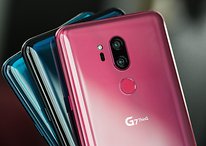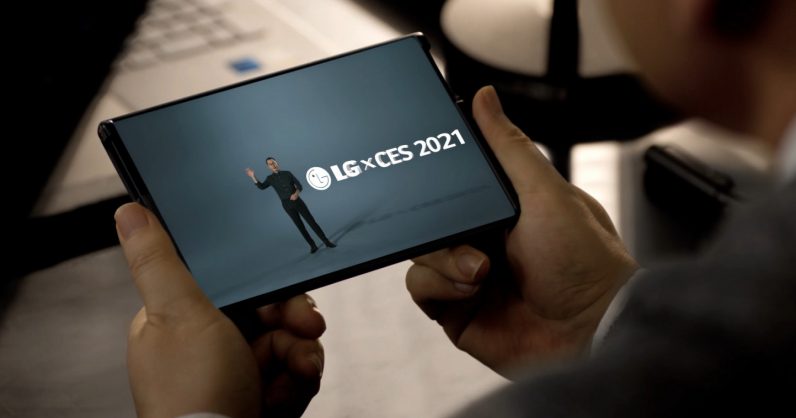Vivo X60 Pro Review - A legitimate contender in the $700 price range - Android
Vivo X60 Pro is one of the latest premium devices from Vivo targeting the markets predominantly in Asia. Vivo has made some subtle changes to last year's X50 Pro but has chosen to keep the original MSRP at least in India. There are a few noticeable drawbacks which is probably the case with most smartphones. [...]
Read More...
The post Vivo X60 Pro Review: A legitimate contender in the $700 price range appeared first on Android Headlines.

Vivo X60 Pro is one of the latest premium devices from Vivo targeting the markets predominantly in Asia. Vivo has made some subtle changes to last year's X50 Pro but has chosen to keep the original MSRP at least in India.
There are a few noticeable drawbacks which is probably the case with most smartphones. However, overall in my review time with this device, I think the positives outweigh the negatives by a significant margin. So is the Vivo X60 pro a worthy successor to the X50 Pro? Let's get the unboxing rolling along to find out.
Unboxing the Vivo X60 Pro in Shimmer Blue

There is not much of a difference in terms of the box for the X60 Pro versus the superior X60 Pro+. So you still get the "Co-engineered with Zeiss" on the front of the square blue box.
And in the box, the contents and branding are identical to the previously reviewed X60 Pro+. So besides the phone, we get a 55W charging brick, USB-C cable, SIM tool, a slim polycarbonate matte case, headphones, headphone tips, and a headphone jack dongle. As usual, the phone has a factory film screen protector on it.
Vivo X60 Pro hardware design language is great for single-hand use and the phone isn't too heavy

I am a big fan of the color-shifting backs and the execution of that feature on the Vivo X60 Pro is second only to the absolutely stunning Oppo Reno5 Pro 5G. Needless to say that this is a good thing Vivo borrowed from Oppo. In different lighting conditions, you get a different hue of blue and that gives this phone a unique personality. The back surface has a slight matte texture to it which makes it less slip-resistant than the glossy back devices which is a good thing in my opinion.

The rest of the hardware design is pretty similar to the previous version. So we see clean lines, smooth surfaces, tight tolerances for ports/speaker grille on the frame. In the front, Vivo has moved the selfie camera punch hole to the center from the left-hand corner. There is still the barely visible earpiece speaker slit at the top which merges effortlessly with the curved glass edge. The bezels are minimal all around and contribute to a premium look for the device.
With all the glass and an aluminum frame, Vivo still manages to keep the weight at 179 grams. This means this device weighs in the lower range of most premium flagship devices. Consequently, the Vivo X60 Pro has good weight distribution for one-hand use.
The phone has a bottom speaker along with a Type-C USB port at the bottom. On the right side, there is the power button with a texture and the volume rocker. Both buttons have an excellent tactile feel with no obvious rattles. The left side rail is clean with just the antenna bands.

On the back, we have the dual-layered camera bump. Our eagle-eyed readers will notice that the periscope telephoto camera is gone and instead the LED flash takes its space. The rest of the back is clean with just the VIVO logo at the bottom on the left. Overall, I think Vivo has done a great job in terms of build quality. Although the design flourishes are modest, the phone definitely looks like a modern flagship.
The display gets a bump to 120Hz compared to the previous version

Vivo decided to put the same Ultra O Samsung AMOLED screen on the X60 Pro as its flagship device which is a good thing. The 1080 x 2376 resolution display panel with a 120Hz refresh rate is while not QHD is definitely as good as what you get on other devices such as the S20 FE. The small punch hole, combined with Gorilla Glass 5 on the display panel means we get a premium experience while gaming or watching videos.
The X60 Pro has a high refresh rate screen, a high-end processor, and 12GB RAM and that means that pretty much all interactions are responsive and lag-free. The touch sampling rate is bumped up to 240Hz which helps the device feel quite snappy during scrolling and moving through various UI elements.

Another thing that is quite snappy on the X60 Pro is the under-display optical fingerprint scanner. It is probably one of the fastest that I have seen on some recent smartphones.
To improve battery life, you can set the display to 60Hz or select 'Smart switch' which will adapt the refresh rate based on your use patterns. In my case for this review, I decided to go all out and just keep the display at 120Hz.
As far as color options go, there are three options – Standard, Professional, and Bright. There is also a color temperature slider in the Display settings. For the review, I chose the default settings which are Standard and color temperature at roughly 50%. I like the fact that Vivo has tuned the display to show colors quite well without relying on any sort of over-saturation. In fact, I was quite happy with the Standard setting and did not see the need to tweak the colors despite the ability to do so.
Dynamic effects setting takes personalization for the AOD to new heights

Another thing Vivo does is a complete menu of visual cues on the display from a personalization standpoint called 'Dynamic effects'. This allows endless customization of ambient light around the edges, fingerprint icon animation, and other visual cues which definitely sets it apart from other devices with AOD display. Since software and display are identical between the top-end Vivo X60 Pro devices, the impressions from the prior Vivo X60 Pro+ apply to its lesser sibling as well.
Vivo X60 Pro Performance gets a big boost compared to its predecessor

Vivo addressed all the hardware shortcomings of the X50 Pro in 2021. Last year the X50 Pro had a 765G processor, 8GB RAM, and UFS 2.1 storage. This time around the X60 Pro sports a Snapdragon 870 processor, 12GB RAM, and the faster UFS 3.1 for the 256GB storage. Basically, the hardware spec bump gives the X60 Pro a stellar price-to-performance ratio.
From a Geekbench 5 comparison perspective, you can see a tremendous jump in terms of both single-core and multi-core performance scores. The single-core score jumps from 673 to 1030 and the multi-core score jumps from 1966 to 3442. Needless to say, this device is definitely much better than last year's model. In fact, the Snapdragon 870 outperforms last year's high-end Snapdragon 865 by almost 10% so this is definitely not surprising. So for folks considering this device for purchase can definitely expect at least 2-3 years of excellent performance without any slowdown.
While using the phone as a daily driver, I could not find any discernable difference between my S20 FE or the Vivo X60 Pro+. The hardware differences in specs do not show up during daily use which is awesome since this phone is almost $300 cheaper!
Software is still a weak spot for the Vivo X60 Pro
New year, a new device from Vivo, but the same problems continue with regards to software. While sister companies OnePlus and Oppo have vastly superior software this is one area where Vivo's FunTouch OS lags. Now don't get me wrong, Google Integration has improved somewhat. However, there are still tons of duplicate apps and services which increase the feeling of bloat.
Besides this quick summary since there is absolutely no difference in terms of software between the X60 Pro and the X60 Pro+. So go take a look at our software review of the X60 Pro+ for more details.
Camera performance is probably one of the best at this price range

The Vivo X60 Pro features a triple-camera on its back with a 48MP primary, a 13MP portrait, and a 13MP ultrawide lens. There is still gimbal stabilization on the main camera and this time around we only get a dual-tone double-LED for flash.
Zeiss has provided a review of the optical hardware testing and verifying the process quality standards.
Main and ultrawide cameras are excellent
Daytime photos from the main and ultrawide camera yield images with accurate and vivid colors. These images also have good detail and just the right amount of sharpness. Unlike the X60 Pro+ which gets the special Zeiss T* coating this version just has the branding. So glare reduction is not as good in night photography or harsh indoor lighting as the more expensive version.
The third camera is a 13MP 50mm f/2.46 aperture (2X optical zoom) for portrait mode. Here you do get to take advantage of the classic Zeiss swirly bokeh called Biotar. Overall portrait mode is quite good at edge detection and the camera app has quite a few effects that you can apply to your portrait pictures.
Photos in low light and nighttime from the main camera are good because of the gimbal stabilization. Nighttime pictures from the main camera are bright with good exposure and detail. Even in very dark conditions the color and contrast are quite good for a smartphone camera.
Using the Night Mode in the camera app produces excellent results even though it takes about 2 seconds for capturing the image. With a tripod, there's more fun to be had by using 'Supermoon' or 'Astro Mode'. Check out the camera samples in our Flickr gallery.
Vivo X60 Pro Camera Samples - Flickr Gallery
Ultrawide camera in nighttime produces slightly worse results than the main camera. If you absolutely want an ultrawide picture at night then use Night Mode within the app to get the best results.
The 32MP selfie camera is a carry-over from last year and the results are just okay. Dynamic range is terrible and there is sometimes a big difference in picture quality between two consecutive images. Despite being a 32MP camera the sharpness and detail are lacking.
Video camera results are a mixed bag
Video quality from the main camera with gimbal stabilization is excellent and this includes audio quality as well. Along with gimbal stabilization, there is also electronic stabilization that's always on for all 30fps modes. You can also use the Ultra Stable mode but that caps the video at 1080p 60fps by cropping the 4K 60fps source.
Camera app offers the same features as the Pro+ version

Camera performance is still excellent despite losing the telephoto lens in the rear. The rear cameras provide great photos during day and night. Still photography results are some of the best in this price range. Video results are also quite good with excellent stabilization, fast autofocus, and good detail from the rear camera. The main weak spot is the selfie camera and that is predominantly due to weak dynamic range.
Battery life is good but not great and 55W charging helps with battery anxiety

We are now down to the parts of the review where the improvements start to fizzle out. In fact, the Vivo X60 Pro battery is smaller than the one found on the predecessor by a few percentage points.
In addition, the newer processor is more power-hungry and the higher refresh rate on the phone doesn't help battery life either. This phone will typically last from dawn to dusk with moderate use. During my time with the Vivo X60 Pro, I saw about 4-5 hours of Screen-on-Time. So this is definitely not a two-day device in terms of battery life.
A lot of videography or heavy gaming might even cause the phone to run out of charge before the day is over. Luckily, Vivo includes a hefty 55W power brick in the box, unlike some other OEMs.
Using the Vivo FlashCharge 2.0 power brick should result in a quick 45-minute full charge cycle. It is surprising that Vivo caps the charging to 55W since sister companies Oppo and OnePlus offer even faster 65W charging bricks. Of course, there isn't any support for wireless charging which keeps reminding you that this isn't yet a full flagship device.
The audio is as good as the more expensive Pro+ version but still no stereo speakers

Audio hardware is identical to that of the more expensive X60 Pro+. So in terms of audio quality, there is no discernable difference between the two devices. Hence, for a single bottom-firing speaker the audio is quite good for calls. But for games and video, it would have been nice if this device had stereo speakers.
Vivo offers Hi-Res audio certification on this smartphone. In addition, there are some additional Sound settings that help you customize the sound with headphones. Consequently audio output via Bluetooth 5.1 or wired headphones via the headphone dongle is definitely above average.
Overall what I came away from this device is that there are plenty of other $700 devices that offer dual stereo speakers. And Vivo should have gone the extra mile to make this a very compelling device from an audio perspective.
In the USA you will only get LTE on the Vivo X60 Pro 5G

With the refreshed Snapdragon 870 processor and the integrated 5G modem, you would think that the Vivo X60 Pro should get a 5G signal out of the box. Alas, for some reason that wasn't the case on T-Mobile's network here in Southern California.
I only saw a 4G signal on my device during the review period. 4G/LTE download speeds on the X60 Pro are comparable to my Pixel 4a which is a 4G LTE device.
My immediate guess is that Vivo software on this device is more for the South East Asia market or perhaps the bands for North America aren't accessible on this review unit. I do think that in the markets that this device is going to sell there is definitely support for 5G bands.
The rest of the connectivity portion of the review is basically exactly the same as what I observed with the X60 Pro+. Calls are loud and clear in either handset or speakerphone mode. There were no issues in terms of online searches, Google Maps, streaming music, or watching an occasional video while out of the house running errands.
Bluetooth 5.1 support means quick and easy pairing with earbuds or an in-car audio system. Google Pay works just fine with the X60 Pro thanks to NFC. But in this price range, you should definitely demand that the phone have NFC support in 2021.
For sharing files you get Nearby Share and Vivo Share. And Smart Mirroring allows you to share content from the phone in terms of audio, video, photos, or screen content. Outside the no 5G signal there aren't any other problems from a connectivity viewpoint.
The Vivo X60 Pro is great but the competition in this price range is intense

Vivo X60 Pro offers an excellent price to performance ratio. Vivo has greatly improved the hardware and display. And despite losing one rear camera, the overall camera experience is actually slightly better compared to the X50 Pro. In addition, the newer version has a slightly smaller battery but we get 55W fast charging brick in the box. So the Vivo X60 Pro is a good buy at around $700. Or is it?
The answer is a bit complicated because, for roughly the same price, you can get the OnePlus 9 which offers wireless charging and arguably a superior software experience. And last year's smash hit the Samsung Galaxy S20 FE is now only $599 and it offers longer-term software support, wireless charging, a bigger battery, an IP rating, and a more well-rounded camera experience for slightly inferior hardware.
Ultimately, competition is a good thing and it's great that consumers have a lot of excellent choices available at the $700 price point.
The post Vivo X60 Pro Review: A legitimate contender in the $700 price range appeared first on Android Headlines.
06/04/2021 07:26 PM
Remembering LG's finest (and strangest) phones
06/04/2021 07:00 PM
Ecovacs Deebot Ozmo N8 Plus review - Affordable extravagance with a catch
06/04/2021 12:00 PM
GM is betting its electrified future on a revolutionary new battery system
06/04/2021 06:30 PM
LG stops making smartphones - Here's what to expect as an LG mobile owner
06/04/2021 10:30 AM
How To Schedule A Tweet On Twitter
06/04/2021 05:07 PM
Google accidentally spills the beans on the rumored Pixel Buds A
06/04/2021 09:27 PM
A brief history of LG’s weird and wonderful Android phones
06/04/2021 01:05 PM
- Comics
- HEALTH
- Libraries & Demo
- Sports Games
- Racing
- Cards & Casino
- Media & Video
- Photography
- Transportation
- Arcade & Action
- Brain & Puzzle
- Social
- Communication
- Casual
- Personalization
- Tools
- Medical
- Weather
- Shopping
- Health & Fitness
- Productivity
- Books & Reference
- Finance
- Entertainment
- Business
- Sports
- Music & Audio
- News & Magazines
- Education
- Lifestyle
- Travel & Local






